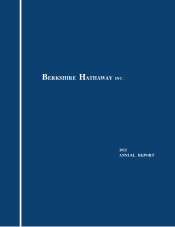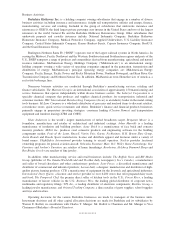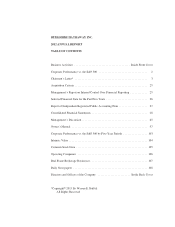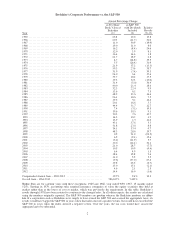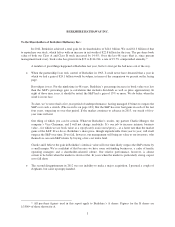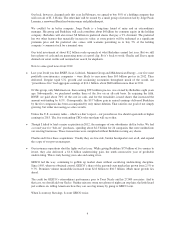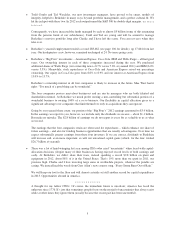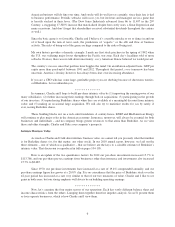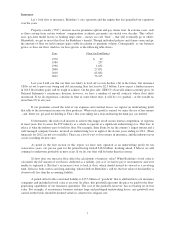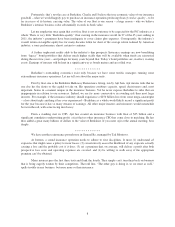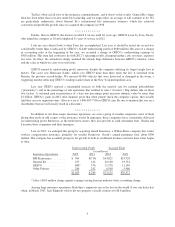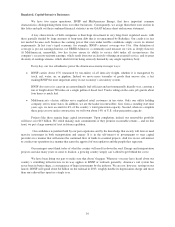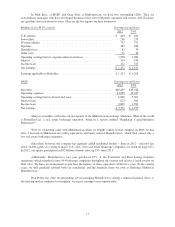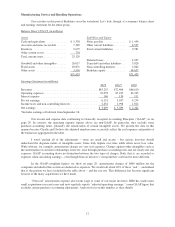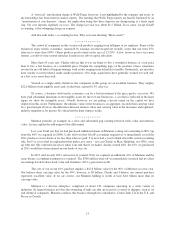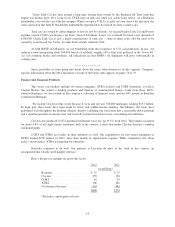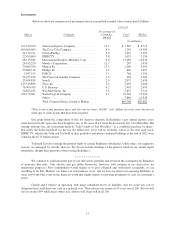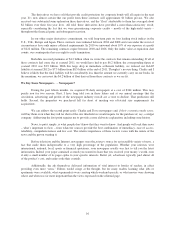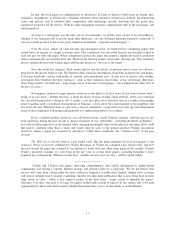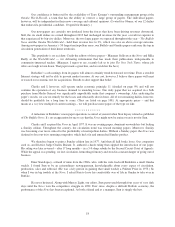Berkshire Hathaway 2012 Annual Report Download - page 10
Download and view the complete annual report
Please find page 10 of the 2012 Berkshire Hathaway annual report below. You can navigate through the pages in the report by either clicking on the pages listed below, or by using the keyword search tool below to find specific information within the annual report.Fortunately, that’s not the case at Berkshire. Charlie and I believe the true economic value of our insurance
goodwill – what we would happily pay to purchase an insurance operation producing float of similar quality –tobe
far in excess of its historic carrying value. The value of our float is one reason – a huge reason – why we believe
Berkshire’s intrinsic business value substantially exceeds its book value.
Let me emphasize once again that cost-free float is not an outcome to be expected for the P/C industry as a
whole: There is very little “Berkshire-quality” float existing in the insurance world. In 37 of the 45 years ending in
2011, the industry’s premiums have been inadequate to cover claims plus expenses. Consequently, the industry’s
overall return on tangible equity has for many decades fallen far short of the average return realized by American
industry, a sorry performance almost certain to continue.
A further unpleasant reality adds to the industry’s dim prospects: Insurance earnings are now benefitting
from “legacy” bond portfolios that deliver much higher yields than will be available when funds are reinvested
during the next few years – and perhaps for many years beyond that. Today’s bond portfolios are, in effect, wasting
assets. Earnings of insurers will be hurt in a significant way as bonds mature and are rolled over.
************
Berkshire’s outstanding economics exist only because we have some terrific managers running some
extraordinary insurance operations. Let me tell you about the major units.
First by float size is the Berkshire Hathaway Reinsurance Group, run by Ajit Jain. Ajit insures risks that no
one else has the desire or the capital to take on. His operation combines capacity, speed, decisiveness and, most
important, brains in a manner unique in the insurance business. Yet he never exposes Berkshire to risks that are
inappropriate in relation to our resources. Indeed, we are far more conservative in avoiding risk than most large
insurers. For example, if the insurance industry should experience a $250 billion loss from some mega-catastrophe
– a loss about triple anything it has ever experienced – Berkshire as a whole would likely record a significant profit
for the year because it has so many streams of earnings. All other major insurers and reinsurers would meanwhile
be far in the red, with some facing insolvency.
From a standing start in 1985, Ajit has created an insurance business with float of $35 billion and a
significant cumulative underwriting profit, a feat that no other insurance CEO has come close to matching. He has
thus added a great many billions of dollars to the value of Berkshire. If you meet Ajit at the annual meeting, bow
deeply.
************
We have another reinsurance powerhouse in General Re, managed by Tad Montross.
At bottom, a sound insurance operation needs to adhere to four disciplines. It must (1) understand all
exposures that might cause a policy to incur losses; (2) conservatively assess the likelihood of any exposure actually
causing a loss and the probable cost if it does; (3) set a premium that, on average, will deliver a profit after both
prospective loss costs and operating expenses are covered; and (4) be willing to walk away if the appropriate
premium can’t be obtained.
Many insurers pass the first three tests and flunk the fourth. They simply can’t turn their back on business
that is being eagerly written by their competitors. That old line, “The other guy is doing it, so we must as well,”
spells trouble in any business, but none more so than insurance.
8

